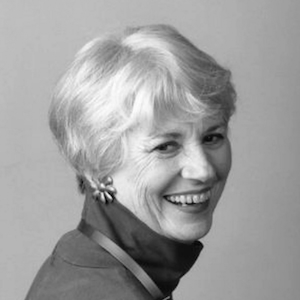
Arline M. Fisch, a much-heralded jewelry designer and educator best known for her innovative incorporation of textile techniques, died on Aug. 20—one day before her 94th birthday.
Born in Brooklyn, Fisch received a B.S. in art education from Skidmore College and originally wanted to be a painter. She soon decided she wasn’t good enough, and dabbled in ceramics before deciding metalwork was a better fit.
“I think with my hands more than I think with my mind,” she said in a 2001 interview for the Smithsonian’s Archives of American Art. “The idea that I would make things, I think, is probably the driving force. But it ended up being jewelry. It’s probably more serendipity than anything. I started working in metal, and what I made was jewelry. I made some vessel forms, but I didn’t really relate to those. I related to the jewelry. That was where I felt stimulated, and I continued to pursue that.”
After receiving two Fulbright grants, Fisch spent most of the 1960s studying and teaching in the United States and abroad. Then she landed on the combination—jewelry and weaving—that made her name.
Discovering how to fuse the two also involved some serendipity: She only began seriously studying weaving when she was “offered the opportunity to take on the weaving program at Skidmore College since there was no chance for me to teach jewelry [there],” Fisch told Art Jewelry Forum in 2014.
“It was a totally different experience to work in soft materials and strong color. It proved to be a fruitful contrast, which remained separate from the jewelry I was making until a trip to Peru opened my mind to the possibilities of combining the two technologies.”
In 1975, Fisch detailed that potential in a book, Textile Techniques in Metal for Jewelers, Textile Artists, & Sculptors. It was revised several times and is now considered a classic.
Fisch was active in industry associations and educational programs. From 1961 until 2000, she taught at San Diego State University, where she started its jewelry and metalsmithing program. She helped found the Society of North American Goldsmiths in 1969, and served as its president from 1982 to 1985.
In 1985, the California State Assembly named Fisch a “Living Treasure of California” for her work as an artist, educator, author, and contributor to the field of American crafts.
The Smithsonian American Art Museum said she “played a central role in the revitalization of jewelry as a contemporary art form.” Yet Fisch was clear that she considered her designs to be for personal adornment, and she admitted to trying on all her pieces at least once.
“I don’t care to have the work hung on a wall or put in a box on the wall,” she said in the 2001 interview. “It’s really wonderful to think that what you’ve made is moving around in the world and isn’t sitting in a corner somewhere, or in a garden somewhere.… It also means that what I’ve created is moving in the world apart from me, and that’s very rewarding.”
She said her greatest legacy will “be my students and what they do.”
One of those students, Tim McClelland, president of the American Jewelry Design Council, called Fisch an “inspiration.”
“She was kind, dignified, articulate, sophisticated, and all business,” he said in a statement. “She was much more than a jewelry teacher. We all thought she was entirely awesome.”
At press time, there was no word on survivors.
(Photo courtesy of the American Jewelry Design Council)
- Subscribe to the JCK News Daily
- Subscribe to the JCK Special Report
- Follow JCK on Instagram: @jckmagazine
- Follow JCK on X: @jckmagazine
- Follow JCK on Facebook: @jckmagazine







